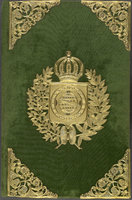Categories Online-Shop World Coins America Brazil
Brazil

With the landing of Pedro Alvares Cabral on April 22, 1500 begins the Portuguese colonial era in Brazil. The explorer took possession of the land for Emanuel I. The colony was named after the main export of the time, the brazilwood. The redwood (port. pau brasil = glowing wood) was mainly used to obtain a brilliant dye.
Until the end of the 18th century above all, Brazil was a rich source of income, which was bubbling through the exploitation of its land and people: slaves cultivated plantations and mines and thus gained sugarcane and spices, gold and diamonds for the Portuguese crown.
In 1807, the royal family fled from Napoleonic troops from Lisbon to Rio de Janeiro. The colony thus became an equal part of the United Kingdom of Portugal, Brazil and the Algarve. The Vienna Congress of 1815 also confirmed this development formally.
In 1822, after demands for a return to colonial status, Prince Pedro took the lead in a pro-independence movement that had already captured many parts of South America. In the same year he achieved as Emperor Pedro I the newly created throne of Brazil.
After a military coup, the second and last Emperor Pedro II was deposed in 1889 and the Republic of the United States of Brazil was founded. The so-called Old Republic existed until 1937, when Getúlio Dornelles Vargas proclaimed the Estado Novo - the New State - and placed himself at the head of the country as a "benevolent dictator". In August 1954, the military demanded his resignation, his vice took office on the 24th and on the following day Vargas committed suicide.
In the colonial era of Brazil, the rulers issued the real as well as in Portugal. The colonial coins bear the portrait of the monarch only in the highest nominal of 6400 reis in gold. The coins of Brazil are well distinguishable by the reverse of those of Portugal: the globe, crossed by a sash, adorns all the coins until the time of the Empire. The most famous silver coins - 960 reis - are often overstrikes of 8 reales pieces from the Spanish colonies of South America and known to collectors as Recunho.


